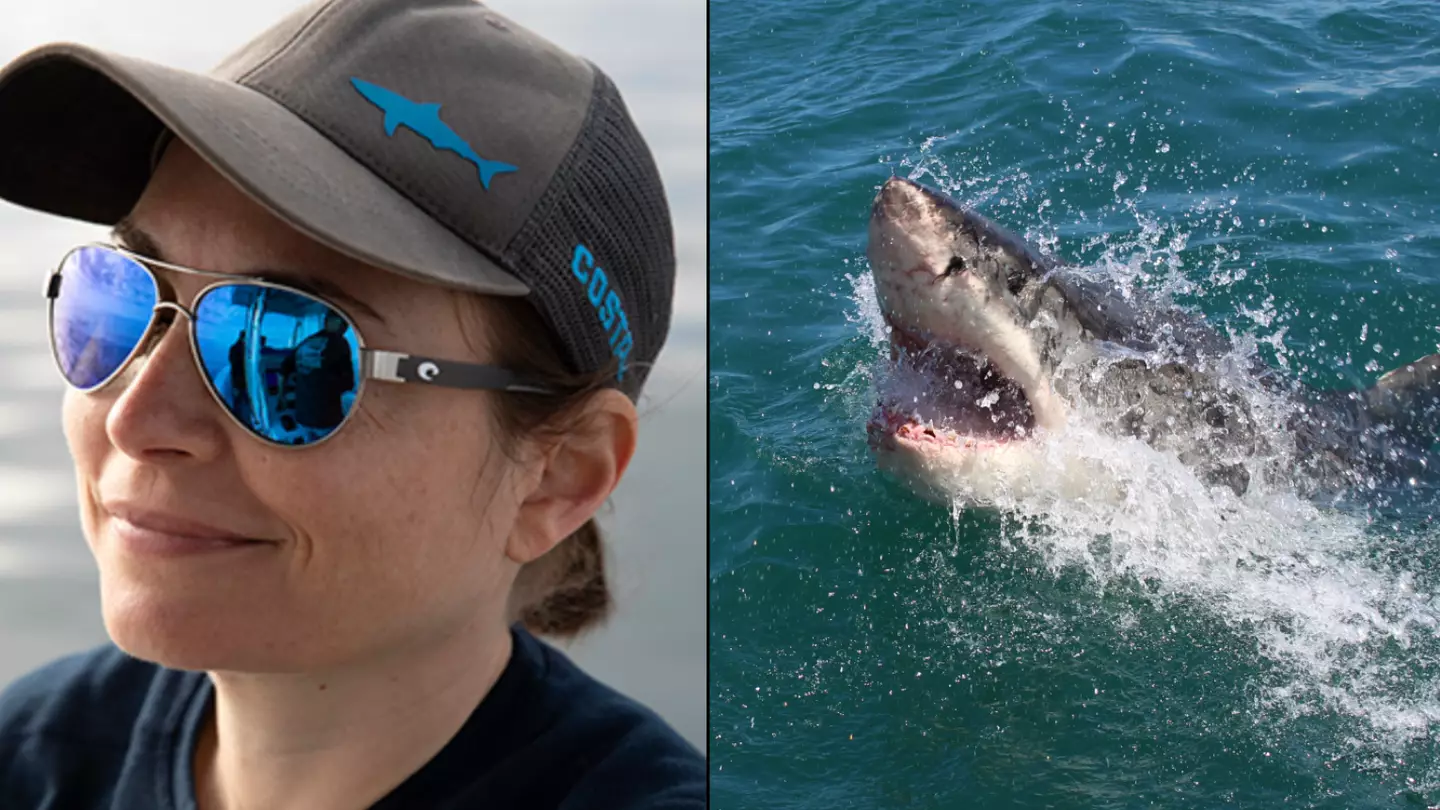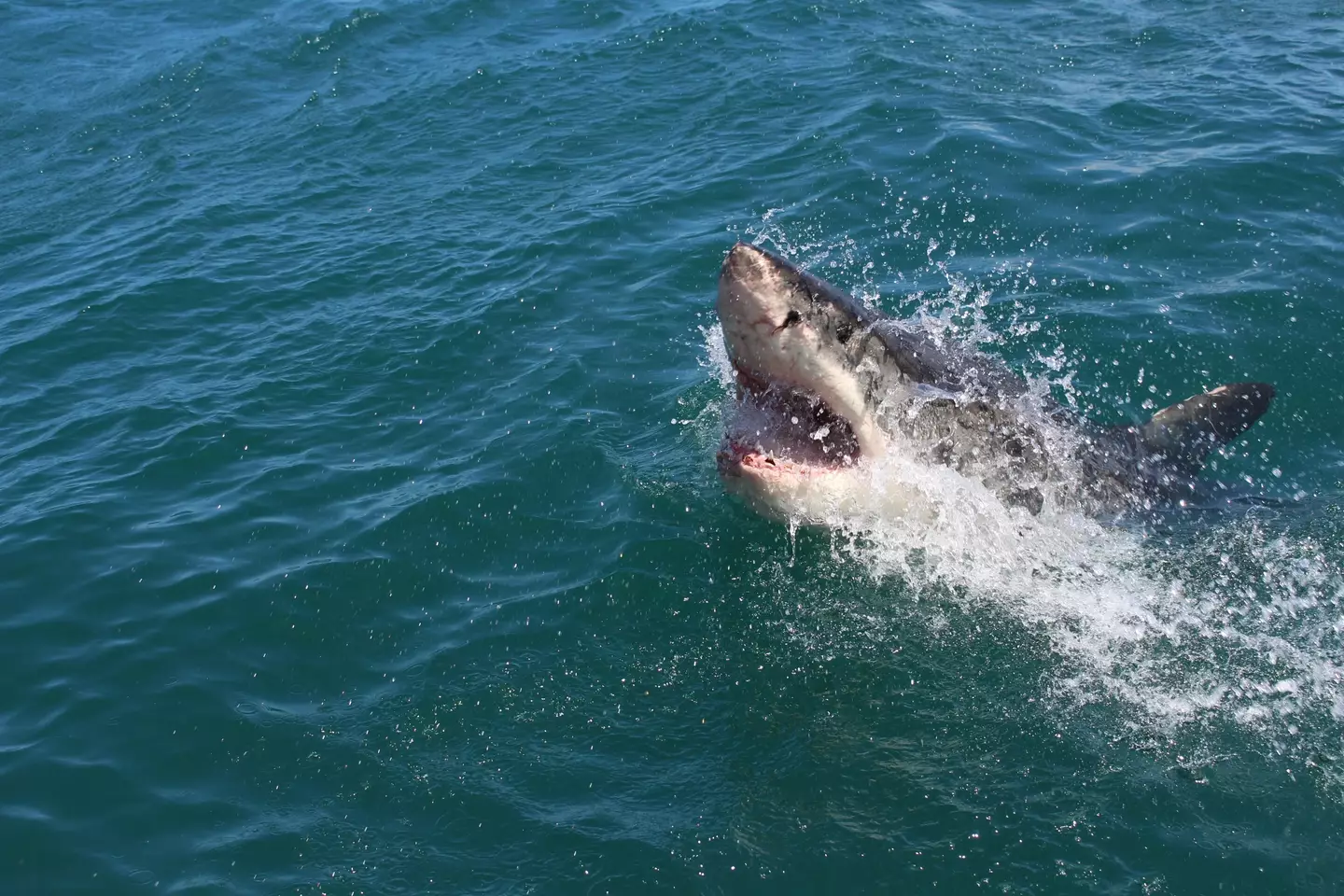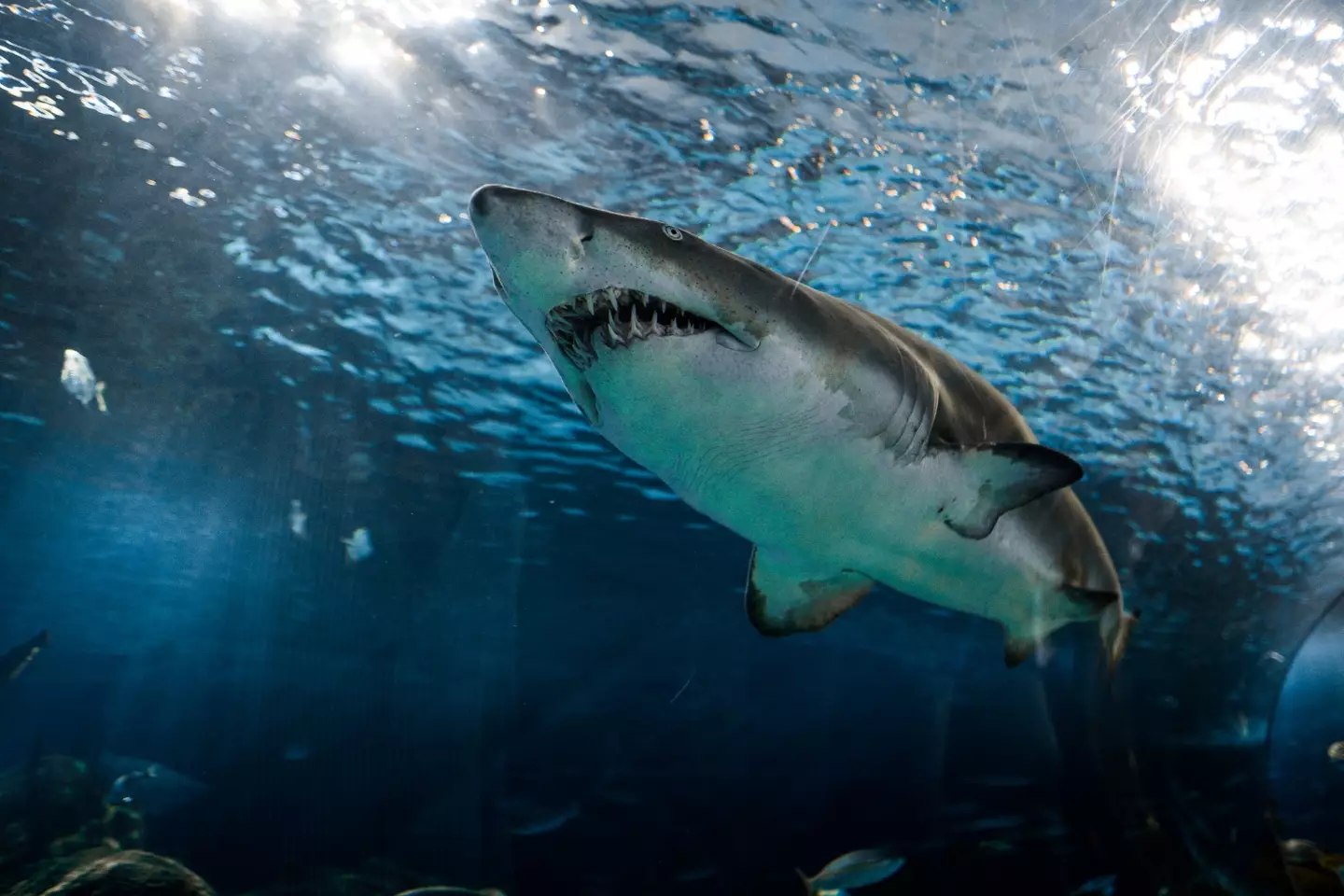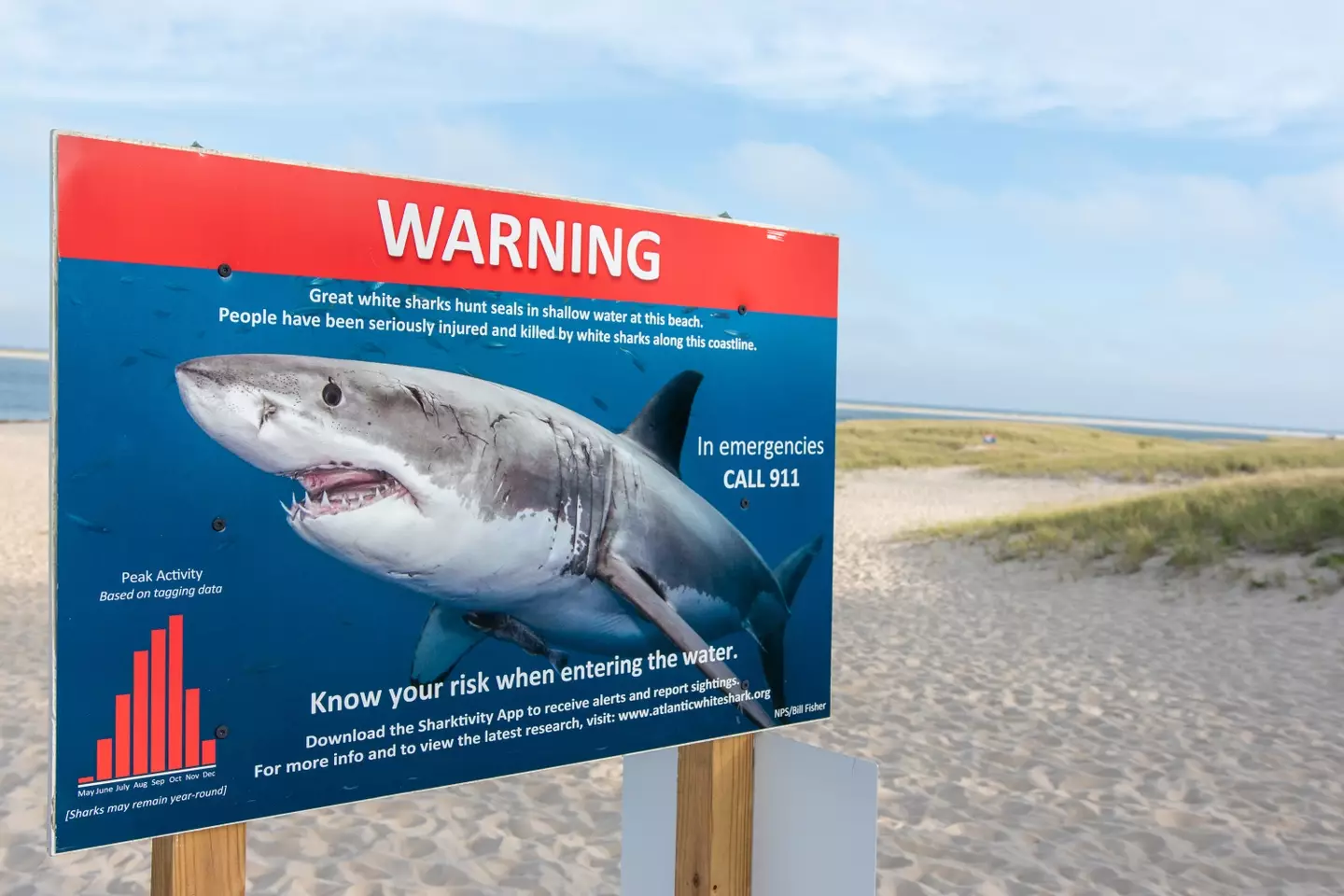
Living in rainy old Britain, you might think that the last thing you need to worry about is running into a white shark – but you’d be mistaken.
The surprising reality is, there are already a lot of species of sharks swimming in EU waters, as Dr. Harley Newton, chief veterinarian scientist at Ocearch, tells LADbible.
And as far as great whites go, they are a very cosmopolitan species that can exist in a wide range of temperatures – meaning there’s practically no limit on where they can travel to.
Advert
There have been well documented cases in the eastern north Atlantic, and even a few potential white shark sightings in the UK, although none of them have been photo-documented.
“There is definitely a strong chance of a white shark swimming to the UK,” Dr. Newton adds. “We are, as a result of climate change, seeing some of the first shifts in their use of habitat. Some species are moving slightly northern to get to some cooler waters but overall that’s not a huge shift yet.

“When we land-based animals think of the environment in two dimensions, we forget the fact that the ocean is incredibly deep and vast. Just because we don’t see them on the surface, it doesn’t mean that they aren’t using the hundreds of metres beneath.”
Advert
Dr. Newton has been present for a significant number of the 84 successful white shark tagging expeditions conducted by Ocearch since 2016.
“I’ve never been scared,” she insists. “[Great] white sharks are a really interesting species that are extremely inquisitive and cautious. The bigger the animals get, the more skeptical they are of our boat and everything else that’s going on."

Also known as ‘white sharks’, or ‘white pointers’ in reference to their white underbelly, the creatures have been on the receiving end of some pretty bad press of late – a British man was fatally attacked in Australia back in February, while a woman was killed by a great white in Cape Town in September.
Advert
But the chances of being bitten by one are still relatively low, Dr. Newton adds.
In fact, according to a 2015 Stanford study, underwater ocean divers have a one-in-136 million chance of being bitten; significantly lower chance than being attacked by a bear (one in 2.1 million) or the odds of dying in a plane crash (one in 9,821).

“[Great] white sharks aren't inherently dangerous to humans,” Dr. Newton explains. “With any type of large, charismatic animal, when you’re interacting with wildlife, there are inherent risks and you need to be aware of your environment as a result.
Advert
“Over the last 30 years, there has been a slight increase in unprovoked bites from white sharks, but the vast majority of these interactions with humans are a cast of mistaken identity.
“There are cases where humans are just in the environment and sharks are going through their normal behaviours (potentially feeding on bait fish or prey in the area) and those incidents usually boil down to the sharks mistaking a human for the prey they are looking for.”

She reiterates that the slight rise in the number of humans being bitten by white sharks is directly related to the fact that humans are increasingly using the ocean more.
Advert
White shark females typically grow larger than the males and are usually around 18 feet. The males are usually around 14-15 feet.
Featured Image Credit: Supplied lex Steyn/Unsplash